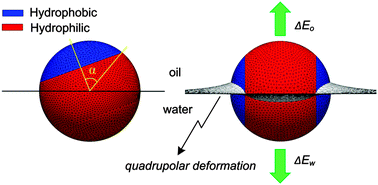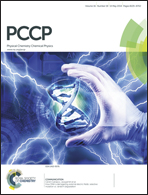Designing patchy particles for optimum interfacial activity
Abstract
We study the adsorption of spherical patchy particles to a flat oil–water interface for their potential applications as interface stabilizers. Chemical heterogeneity in form of single and double patches of different sizes is introduced on the surface of a homogeneous particle to induce an amphiphilic character. For a single well-defined patch, we have developed theoretical criteria for designing particles with the maximum degree of surface activity based on any given wettability conditions. We also evaluate the interfacial behavior of spherical particles with two symmetric patches. Depending on the amphiphilicity and size of the patches, our numerical calculations indicate that such particles at equilibrium can orient so their patches are either parallel or normal to the interface. In case of normal-patch orientation, the interface deforms due to heterogeneity along the contact line, leading to quadrupolar capillary interactions between neighboring particles. We demonstrate that the double-patch design can enhance the surface activity for contact angles close to 90°, while a single-patch pattern is preferred in case of highly amphiphilic particles.


 Please wait while we load your content...
Please wait while we load your content...